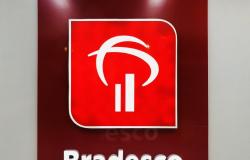For the second consecutive month, the average interest rate on revolving credit cards fell for families, falling from 419.3% per year in January to 412.5% per year in February this year. This represents a reduction of 6.8 percentage points in the month and 7.9 percentage points in 12 months. This data was released in the Monetary and Credit Statistics by the Central Bank (BC) on the 2nd.
Revolving credit is used when the consumer does not pay the full amount of the card bill, resulting in a loan in which interest begins to accrue on the unpaid amount.
Although it is known for having the highest rates on the market, the entry into force, in January this year, of the law that limits revolving interest to 100% of the debt value — and no more than 400% per year, as used to be — has limited impact, as it only applies to new financing. Therefore, the statistics still reflect high levels.
Credit card
After the 30-day period, financial institutions offer options for paying credit card debt in installments. In the case of the installment card, interest also showed a reduction of 3.3 percentage points in the month and 7.3 percentage points in 12 months, reaching 184.5% per year.
The drop in interest rates charged on credit card transactions was the main factor that influenced the reduction in the average interest rate charged to families in February. On the other hand, special check interest increased by 6 percentage points in the month and reduced by 2.9 percentage points in 12 months, reaching 131.8% per year.
Considering all types of credit available to individuals, the average interest rate reached 52.5% per year, with a reduction of 0.1 percentage points per month and 6.0 percentage points in 12 months.
Operations
In relation to operations with companies, the average rate was 21.4% per year, with a monthly decrease of 0.9 percentage points and 2.4 percentage points in relation to the same period of the previous year. This result is mainly due to the decline in the average rates for discounts on trade bills and other receivables (1 percentage point), working capital with a term of more than 365 days (0.7 percentage point) and revolving credit card (38.3 percentage points).
In total credit with free resources, considering both individuals and legal entities, the average interest rate was 40.2% per year in February, with a decrease of 0.3 percentage points in the month and 3.8 percentage points in 12 months. The monthly reduction is mainly due to the effective decrease in interest rates, with a minimal adverse effect on the composition of the portfolio.
Free credit allows banks to lend money raised in the market and determine the interest rates charged to customers, while in targeted credit, the rules are defined by the government and are mainly intended for the housing, rural, infrastructure and microcredit sectors.
Targeted credit
In the case of targeted credit, the average rate for individuals was 9.4% per year in February, with a reduction of 0.3 percentage points in the month and 0.8 percentage points in 12 months. For companies, the rate fell 0.3 percentage points in the month and 1 percentage point in 12 months, to 12.2% per year.
As a result, the average interest rate on credit concessions continues to slow down and reached 27.8% per year in February, with a reduction of 0.4 percentage points in the month and 3.3 percentage points in 12 months. The peak in interest rates was recorded in May last year, reaching 32.3% per year.
This downward trend in average bank interest rates occurs while the economy’s basic interest rate, the Selic, is also declining. The Central Bank has already reduced the Selic six consecutive times, setting it at 10.75% per year by the Monetary Policy Committee (Copom).
Copom
From March 2021 to August 2022, the Copom raised the Selic rate on 12 consecutive occasions, in a cycle of monetary tightening that began due to the increase in food, energy and fuel prices. The rate was maintained at 13.75% per year for one year, from August 2022 to August 2023, in seven consecutive meetings, to contain heated demand.
Before the increase cycle began, the Selic was at 2% per year, the lowest level since the historical series began in 1986. In response to the economic contraction caused by the COVID-19 pandemic, the Central Bank reduced the rate to stimulate production and consumption, keeping it at the lowest level in history from August 2020 to March 2021.
Regarding the balance of the credit portfolio, the total volume of operations in the National Financial System (SFN) reached R$501.6 billion in February, a decrease of 0.3% in the month and an increase of 5.3% in 12 months . The total stock of loans granted by banks was R$5.796 trillion, an increase of 0.2% compared to January and 8% in 12 months. This performance reflects the 0.2% decrease in the stock of credit for companies, totaling R$2.218 trillion, and the 0.5% increase in credit for families, totaling R$3.578 trillion.
(With Agência Brasil).






